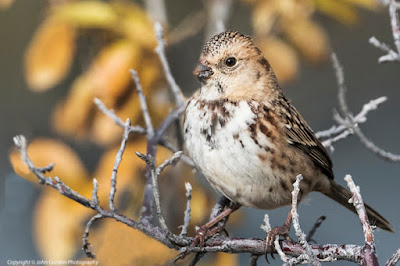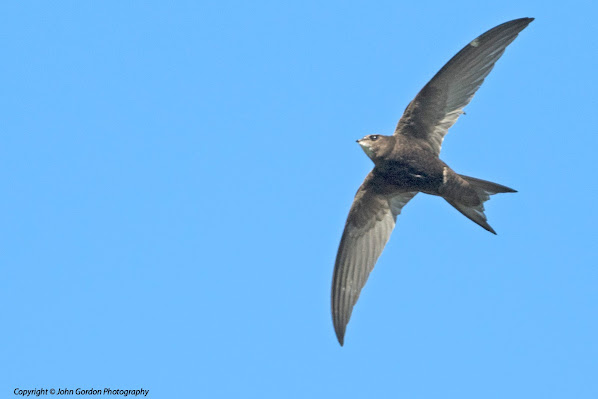SASKATOON
OCT 12-16 2023
There are many things to love about Saskatchewan, dramatic light, wide open skies, genuine hospitality and of course the birding. I hadn't visited Saskatoon since 1979. My only recollections were the bridges, and a University.
 |
| St John's Anglican Cathedral. |
Prairie Birding
I had a long standing invitation to visit the Wagner family in Saskatoon during the Whooping Crane migration. That was supposed to happen three years ago but Covid ended all that and last year I was in Australia so that didn't work out either. Finally in early October 2023 the stars aligned, I made a few calls and suddenly the trip was on.
 |
| Thousands of Snow Geese on one of the many lakes we passed on our search for whoopers. |
The plan was to venture north of Saskatoon to look for cranes. Whooping Cranes are assessed as endangered by the Committee of the Status of Endangered Wildlife in Canada and are protected under the Species at Risk Act.
Sarah and Brent Wagner were my hosts. Sarah even took a week off from her veterinarian duties to join me. Brent, an educator and outdoorsman had some ideas about where to search. I just followed, I knew I was in good hands
Whooping Cranes are popular with birding tours. Maybe the guides knew something we didn't because we drove for hours with nothing to show for it. My thinking was there must be dips and hollows that were hidden from the road. There is just so much land to cover. Eventually and just before we were going to give up for the day three white cranes glided over our heads and landed in a close-by marsh. Whoop-ee, the pressure was off, smiles and high-fives all around. I was so exited I almost dropped my lens. We spent an hour with the birds until the wind picked up and it was time to head home for some of Brent's delicious cooking.
Whoop-ee!
 |
Three Whoopers landed close enough for photographs.
|
In the 1940s twenty Whooping Cranes were known to survive. In 1976 fifty birds were counted. Today there are five hundred plus, a remarkable conservation story. Another birder we met saw 36 the same day and even higher numbers have been reported if you are in the right place at the right time.
Whooping Crane Migration Map
 |
| Former and present Whooping Crane migration routes. |
|
Note the migration path from Wood Buffalo Park through Saskatchewan and into North Dakota.
On the way home we stopped off at Chief Whitecap Park to watch flocks of Sandhill Cranes coming to roost on the banks and islands of the Saskatchewan River, a truly awe inspiring sight. A conservative count in thirty minutes was two-thousand and they were still arriving as darkness fell.
 |
| Sandhill Cranes. |
Day 2
 |
| Trembling Aspen (Populus tremuloides) light up the hillsides as prairie meets rolling hillsides. |
Finally after a few hours of driving through spectacular scenery Sarah spots what she thought might be a white something in the distance. Sure enough another three whoopers but a long way off. This was much better light than yesterday albeit twice as far. A couple of local band members pull up and ask what all the fuss was about, we chat a while, making sure it's ok to linger and with broad smiles they leave us to our birding.
 |
| Always alert to any danger this family of Whooping Cranes had radio transmitters. |
 |
| The larger Whooping Crane takes a run at the Sandhill Cranes that were deemed too close. |

During our search we were graced with some great sightings including Bald Eagles, Common Raven, Red-tailed Hawk, Merlin, Rusty Blackbird, Tundra Swans and Ross's Geese. As we drove along quiet country lanes Sharp-tailed Grouse would explode from the roadside. As much as we tried we couldn't get a photograph.
 |
| Rufffed Grouse. |
I can still see them gracefully gliding away into the distance, never to be seen again. One afternoon I drove down to Blackstrap Reservoir where eBird sightings were promising. What I didn't figure into the equation was the howling wind that kept smaller birds down with only the occasional Savannah Sparrow brave enough to show itself. Over the lake a small flock of Tundra Swans use the same winds to launch themselves to greener pastures.
 |
Blackstrap Reservoir,
Stop-off for migrating Snow Geese, Tundra Swans, shorebirds and assorted ducks species. |
 |
| Among the thousands of Snow Geese were the smaller Ross's Geese seen here on the edge of the flock. |
City Birding
Saskatoon has an excellent trail system on both sides of the Saskatchewan River. A weir creates a natural feeding area for gulls ducks, shorebirds and cormorants. Along Kinsman Park Sarah and I had Yellow-rumped, Orange-crowned and Palm Warblers. At Kiwanis Park American Tree Sparrows, Northern Flicker and at the Water treatment Plant we had a late Osprey, Franklin's Gull and California Gull. I think a week or two earlier there would have been more warblers, Harris's Sparrow were common and a welcome addition to my Saskatchewan list. Along the banks of the river were double-crested cormorants, Greater Yellowlegs and Cackling Geese.
 |
| Franklins Gull |
 |
| Harris's Sparrow |
 |
| Least Chipmunk |
The least chipmunk seen here hoarding of what appeared to be rose hips seeds. The seeds were excreted from the animal's pouch and deposited on the branch. A possible explanation is that the cache will be consumed during the depths of winter.
We had so much fun birding and walking along the river trails the days just slipped by. Another morning Sarah and I were joined by Trent Watts. He had accompanied us on the second day looking for whoopers. The multi talented Trent took us for a walk in his neighbourhood. I was looking for Blue Jays and White-breasted Nuthatches. Soon his keen ear picked up a White-throated Sparrow and then an elusive Yellow-shafted Flicker. In one backyard Bohemian Waxwings were feasting on berries.
 |
| Sarah with Trent with one of his free libraries. |
Later on our walk, Trent, a retired veterinarian, photographer and master carver/woodworker was happy to show us some of the little free libraries he had build at various locations around town. They make quite the addition to the neighbourhood. Everyone it seems appreciates Trent and rightly so.
.jpeg) |
| Northern Flicker (Yellow Shafted) |
 |
| Osprey at the Water Treatment Plant |
 |
| Red Squirrel |
Jackrabbits
Sarah had promised me that there were jackrabbits in the local park, they're everywhere, she promised. They're even in the garden, they're not afraid of dogs or people, they'll be easy to see. My stay in Saskatoon was winding down and I still hadn't seen 'hide nor hair' of anything resembling a rabbit. When Sarah's daughter Charlotte sees one on the lawn, we all rush out like school children but it has gone. Sarah suggests a walk around the block after supper. We cover a few blocks but still no luck. Finally I spot a familiar shape, just a silhouette, the long ears are a giveaway.
As we approached it scampers past us at high speed and I swing the camera around and then it stops, motionless under the brightest street light in the neighbourhood.
Moments later it was gone. It has to be my favourite memories from the whole trip.
 |
| A White-tailed Jackrabbit speeds along a sub-division in Saskatoon. |
The species has moved into local parks and gardens. A major difference between rabbits and Jackrabbits (Hares) is the latter have young in above ground nests and do not burrow.
 |
| A White-tailed Jackrabbit pauses under a street light before disappearing into the night. |
Last Morning
Sarah had been making some phone calls on my behalf. We were to meet up with local expert birder Guy Wapple. Guy has been birding the prairies since he was a kid so he knew exactly where to go for a few hours before my flight back to Vancouver. We met him at the Forest Farm Park on the outskirts of town. He keen ear picked up a Palm Warbler right way and Yellow-rumped Warblers were plentiful.
 |
| Long-eared Owl. |
We soon had twenty-two species including a Long-eared Owl that was brought to our intention by a mob of Blue Jays and Black-billed Magpies that were making its life miserable.
 |
| Palm Warbler at the Forestry Farm Park in Saskatoon. |
We then visited the John Avant Pond which on close examination turned up some really nice birds. A flock of Rusty Blackbirds always kept one step ahead of us, an immature Merlin couldn't care less as we stood fifteen metres away. Thanks to Guy it was a beautiful way to conclude my brief visit.
 |
| Merlin at John Avant Park. |
 |
Rusty Blackbird
|
Parting Shot.
.jpeg) |
Opportunistic feeders Sandhill Cranes gather to feed in grain fields south of Saskatoon.
|
"Make it happen, it's never too late"
John Gordon
Langley Cloverdale
BC






















.jpg)

%20web-9446%20(1).jpg)







.jpg)






























.jpeg)

.jpeg)





.jpg)